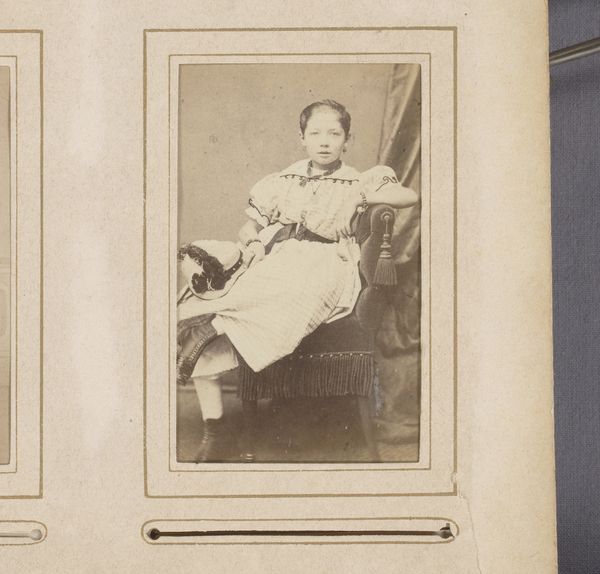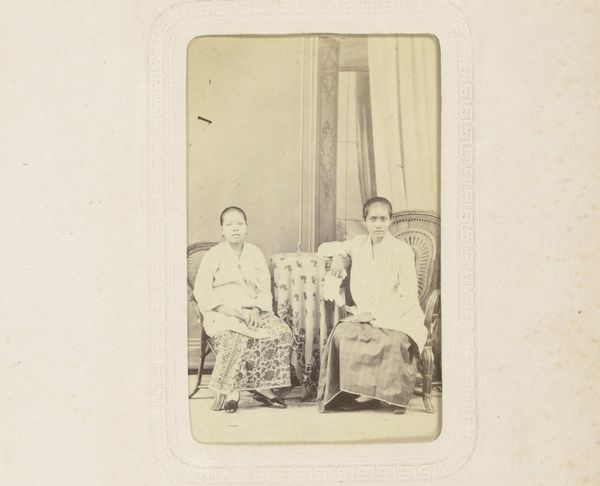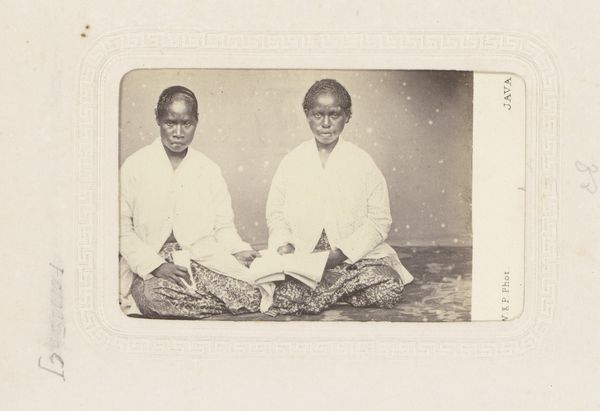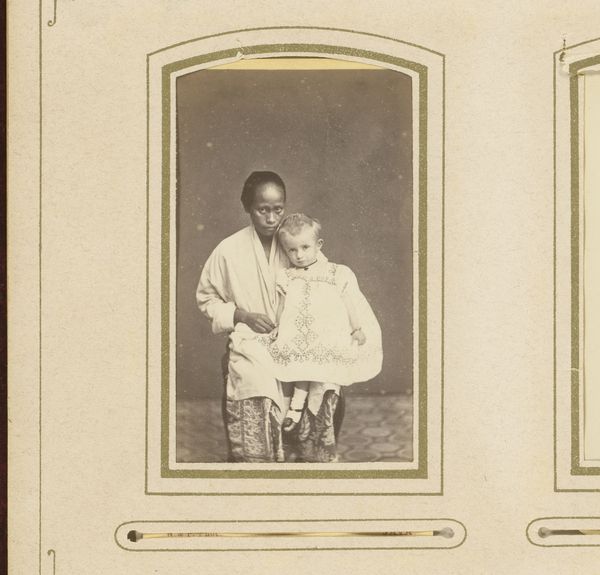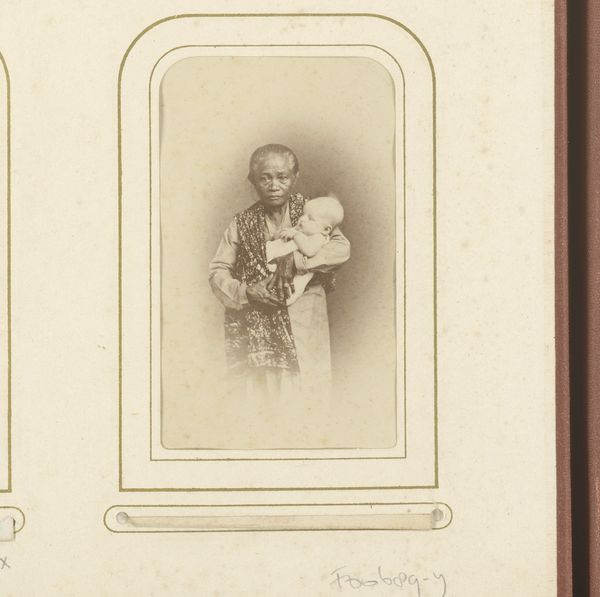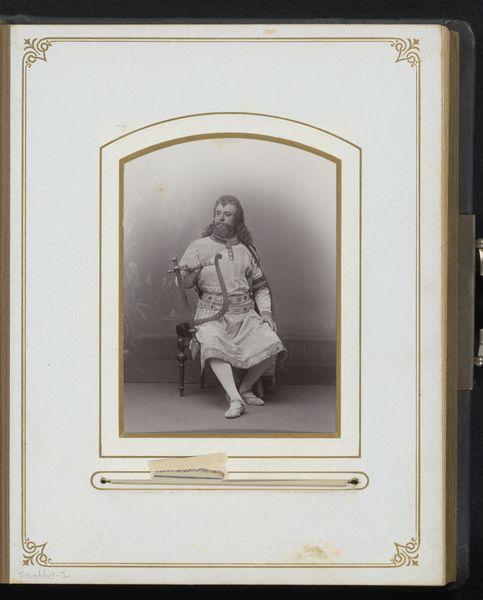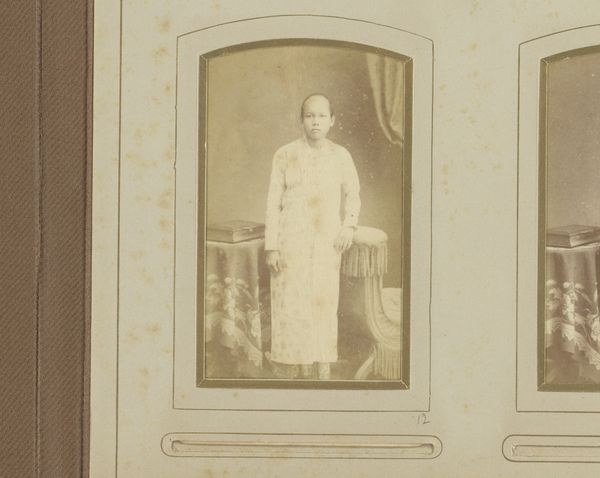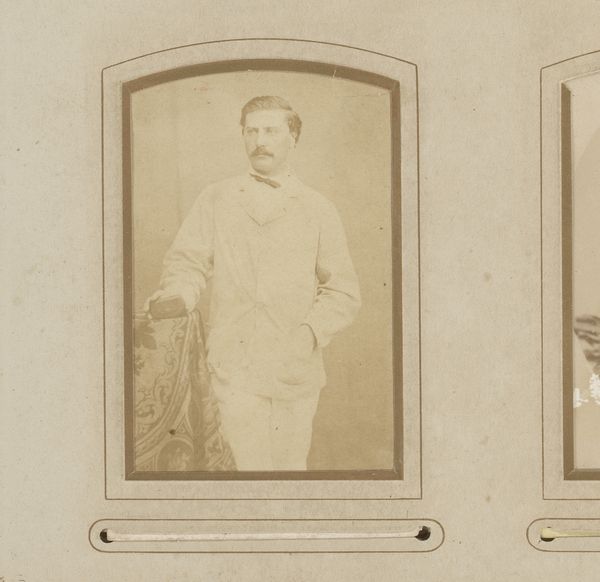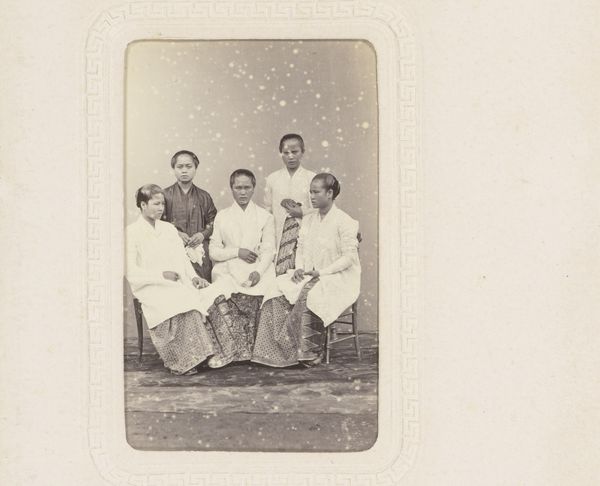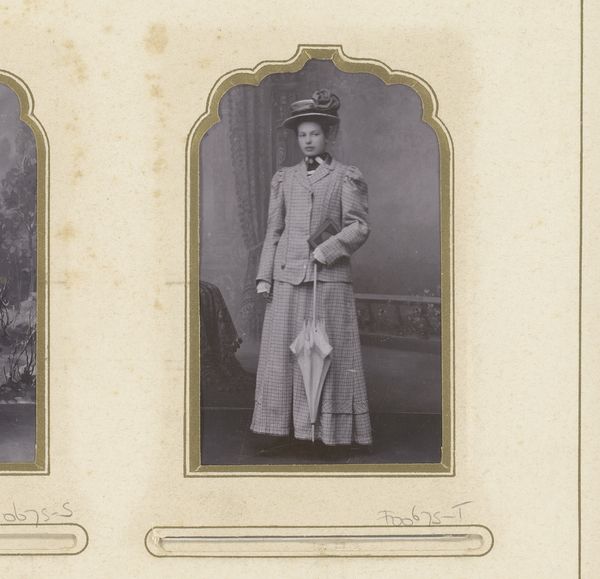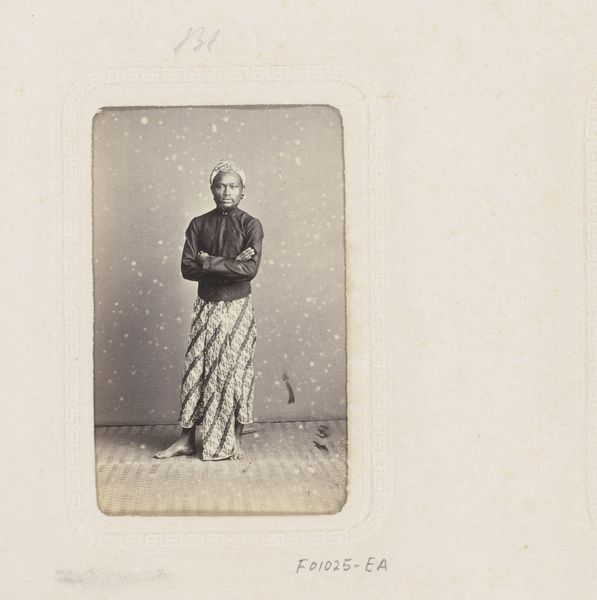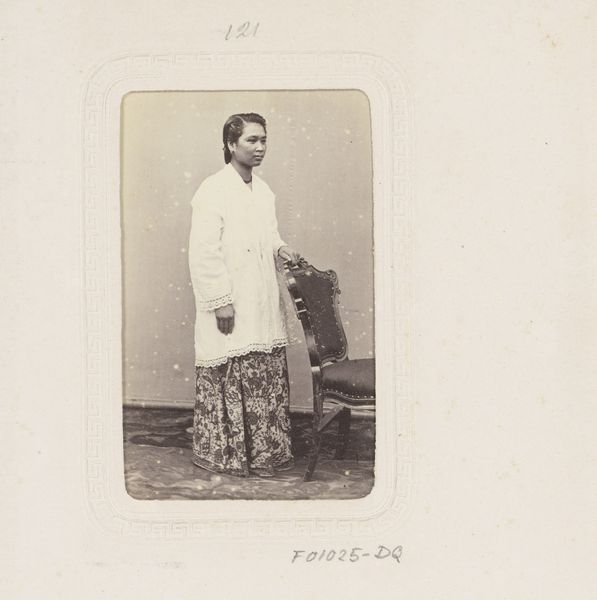
Portret van een zittende Indonesische vrouw met een Europese baby op schoot 1857 - 1908
0:00
0:00
woodburypage
Rijksmuseum
photography, albumen-print
#
portrait
#
african-art
#
photography
#
historical photography
#
orientalism
#
genre-painting
#
albumen-print
#
realism
Dimensions: height 82 mm, width 53 mm
Copyright: Rijks Museum: Open Domain
Curator: Standing before us is an albumen print simply titled, "Portret van een zittende Indonesische vrouw met een Europese baby op schoot" – or "Portrait of a seated Indonesian woman with a European baby in her lap." It was captured sometime between 1857 and 1908 by Woodbury & Page. Editor: There's such a palpable stillness... and yet, underneath that calm exterior, I feel an entire unspoken story throbbing. It feels both intimate and intensely distant, if that makes sense. Curator: Absolutely. The stark contrast in their skin tones immediately leaps out, setting up this visual push and pull. It really throws the symbolism of colonial power dynamics into sharp relief, wouldn’t you agree? Editor: It's almost painfully clear. Look at the baby, swathed in all that white cloth... it resembles a bundled offering. In this context, white becomes a complex emblem, loaded with connotations of purity but also dominion. It’s a real symbolic load-bearer, if you like. Curator: Indeed. This image flirts with the Orientalist style popular at the time but retains this undeniable undercurrent of... unease. The realism with which they’re portrayed disrupts any simple, exoticized reading, wouldn't you say? There's no romantic veil here. Editor: No, you’re spot on. The patterning in the woman’s skirt and the nearby fabrics, set against the bareness of her face and arms... It feels like visual code. Every element is almost painfully conscious of its role, of the larger, complicated narrative. There are these clues within clues, whispering. What is her story beyond this imposed composition? It stirs something profound. Curator: And yet, there's a tenderness. Look at how she holds the child, securely but not possessively. Maybe that sliver of unspoken tenderness is their rebellion against history itself? The idea that they transcend this composition is appealing... Editor: Yes. It could be construed in multiple ways, couldn’t it? I hadn't thought of that, of her tenderness in defying history itself. In any case, thank you. I think that I have a clearer perspective of the picture now, a better way to communicate it.
Comments
No comments
Be the first to comment and join the conversation on the ultimate creative platform.
